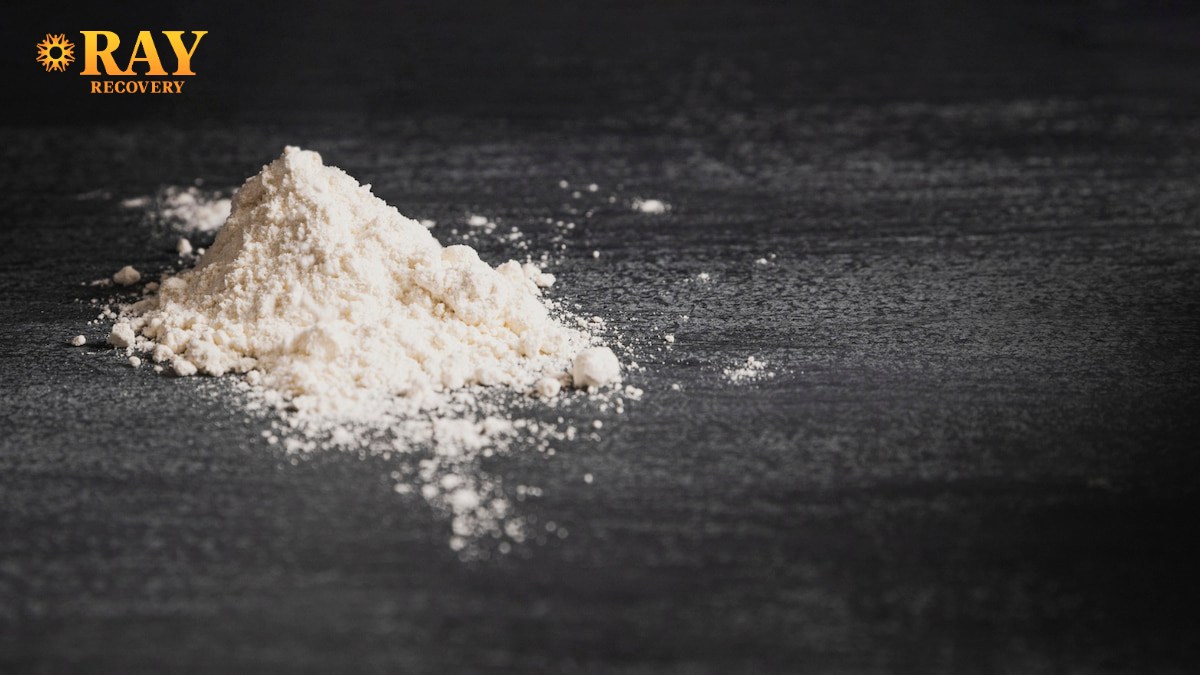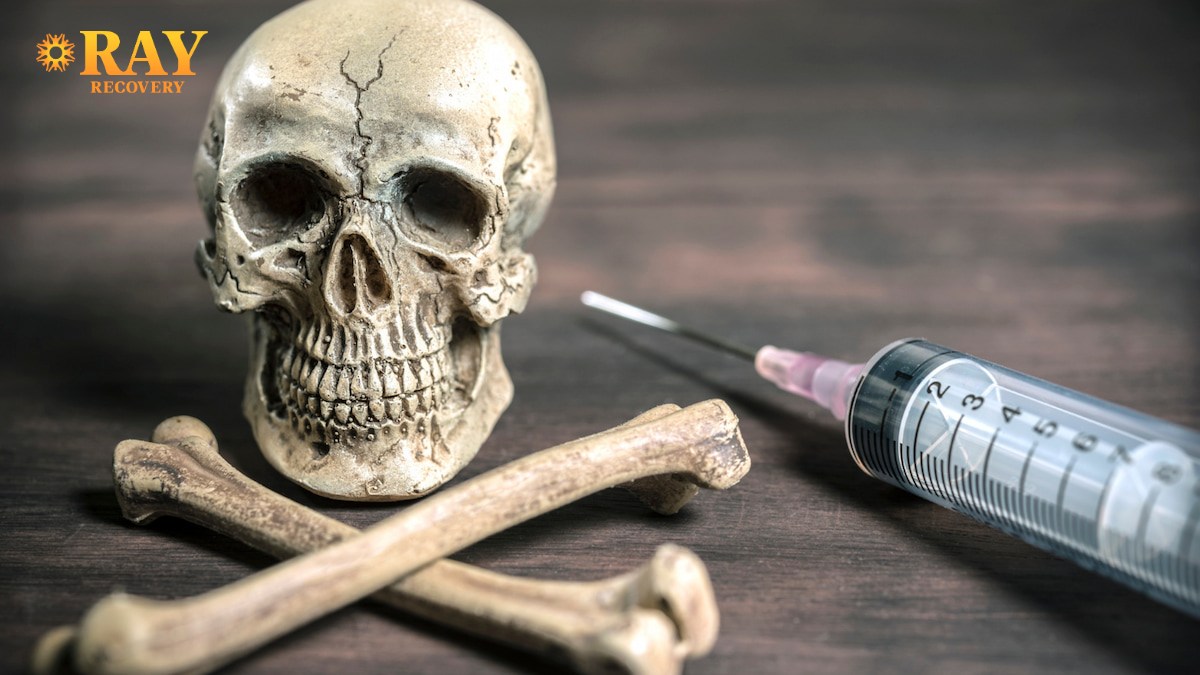Key points:
- Heroin withdrawal triggers flu-like symptoms, intense cravings, and physical discomfort as the body adjusts.
- The body’s nervous, endocrine and digestive systems all react when heroin use stops, causing multi-system stress.
- Proper support, hydration, rest and care options help reduce risk of complications and build the foundation for longer-term recovery.
Heroin withdrawal is one of the most difficult physical experiences a person can endure. As the body adjusts to the absence of opioids, symptoms such as nausea, chills, muscle pain, insomnia, and intense cravings can quickly set in. Without proper care, the discomfort can feel unbearable, often leading to relapse.
However, understanding what’s happening inside the body during withdrawal can make the process less frightening and more manageable. In this article, we’ll explain the stages of heroin withdrawal, what the body goes through, and how medically supervised detox can ensure both safety and comfort during recovery.

Why the body reacts: dependence, receptors and regulation
Understanding the physical symptoms of withdrawal starts with what heroin does to the body over time.
- Heroin is a short-acting opioid which, after sustained use, causes the brain and body to adapt by reducing its own natural opioid-type activity.
- In particular, repeated heroin use affects the opioid receptors in the brain (mu-, delta-, kappa- receptors) and the locus coeruleus region, which contributes to regulating stress responses and brain excitability.
- When heroin is suddenly stopped (or significantly reduced) the body’s adjustment mechanisms overshoot or become dysregulated: what was suppressed now rebounds, creating many of the withdrawal signs we see.
- The result is a multi-system effect: nervous system, digestive, muscular, cardiovascular and endocrine all respond to the change.
Recognising that withdrawal is more than just “wanting heroin” or “feeling sick” helps explain the breadth and intensity of the symptoms.
Onset and timeline of withdrawal: what to expect
While every individual’s experience is unique, with factors like dose, duration of use, general health and whether other substances are involved, there is a typical pattern.
- Since heroin is short-acting, withdrawal often begins between about 6-12 hours after last use.
- Symptoms generally peak within 1-3 days (24-72 hours) and then begin to decline during the first week.
- Some physical effects may linger and emotional or psychological symptoms can continue into the “post-acute” phase (weeks to months) though the height of physical symptoms has passed.
- For example, one guideline states the worst of physical symptoms often subsides in about 3-5 days after onset.
- However, duration and severity are influenced by how long the person used heroin, how much was used, individual health and any co-occurring medical issues. Substance abuse treatment services provide the medical oversight needed to safely navigate this challenging timeline.
In short: expect an early onset of discomfort, a peak of symptoms within the first couple days, then a gradual tapering, but keep in mind that even when the physical acute phase eases, other challenges may remain.
What happens to your body during the acute withdrawal phase
Below are the major systems and what they go through in the acute phase (hours to days) of withdrawal from heroin.
Nervous system & brain
- Increased activity in the locus coeruleus leads to symptoms like anxiety, agitation, tremors, restlessness.
- Sleep becomes disturbed: insomnia, frequent awakenings, vivid dreams or nightmares. The brain is trying to recalibrate its reward and neurotransmitter systems (dopamine, norepinephrine).
- Pupils dilate, and you may feel hypersensitive to noise, light or physical sensations.
- You may experience strong heroin cravings as part of the neurological “reward circuit” re-aligning.
Muscular, skeletal and systemic discomfort
- Muscle and joint aches, bone pain, and general “all over” soreness are common. This is partly because opioid suppression of pain pathways has been removed and the body feels the rebound.
- Tremors, shivering, goose-bumps, cold/hot flushes may occur as the body is thermoregulating differently.
- The heart rate often increases, as does blood pressure, since opioids slow the sympathetic (“fight or flight”) system and withdrawal lifts that suppression.
Digestive and urinary system changes
- Common symptoms: nausea, vomiting, diarrhea, abdominal cramping, loss of appetite. These stem from the gastrointestinal system’s adjustment to absence of opioids.
- Runny nose, watery eyes, sneezing and yawning: although they may seem minor, they reflect autonomic nervous system changes (e.g., increased cholinergic activity) triggered by opioid discontinuation.
- Sweating (sometimes profusely), often accompanied by chills and fluctuations in body temperature.
Emotional, cognitive and sleep changes
- Mood swings, irritability, anxiety, depression (or dysphoria) are common. The brain’s reward system has been altered by heroin use and withdrawal nudges it back toward baseline but it takes time. Anxiety and addiction often co-occur, making professional support essential during this vulnerable period.
- Cognitive fog, difficulty concentrating, memory issues, low energy are part of the process of the brain trying to recalibrate.
- Sleep is often one of the most disturbed domains: the person may feel extremely tired but unable to sleep, or sleep poorly and wake feeling unrested.
Why your body “feels flu-like”
Through the combination of sweat, chills, muscle pain, gastrointestinal upset, runny nose, watery eyes and general malaise, many describe withdrawal as “like a bad flu, but worse”. For instance, one source says “early symptoms make people feel like they have a bad cold or the flu.” The comparison helps convey the systemic nature of the changes.
What changes in the following days and how the body recovers

As the worst of the acute symptoms pass, certain changes begin to settle, and the body starts rebuilding. Here’s what to look for in the days following onset.
- After the peak (often around day 2-3), many physical symptoms begin to gradually fade: vomiting and diarrhea slow down, muscle pain may ease, temperature and sweating stabilise.
- The digestive system begins to normalise, appetite returns, sleep may still be poor but slowly improves.
- Emotional and psychological symptoms may linger longer: cravings, low mood, anxiety, irritability and disrupted sleep may persist even as physical symptoms reduce. Trauma therapy can help address underlying emotional pain that surfaces during this recovery phase.
- Sleep architecture gradually restores: REM sleep begins improving, deep sleep may still be elusive for a time.
- The brain slowly restores neurotransmitter balance and receptor sensitivity, this is not instantaneous. Some effects of long-term heroin use take weeks or months to reverse. Understanding signs that your body is detoxing can provide reassurance during this healing process.
It is also important to note that while many physical symptoms become manageable, this phase is still vulnerable for relapse. The discomfort of withdrawal plus strong cravings make support and structure highly important.
Duration and what can influence how long you’ll feel effects
How long withdrawal lasts and how intense it is depend on several factors:
Key influencing factors:
- Duration of heroin use (weeks vs years)
- Frequency and dose (daily heavy use vs occasional)
- Method of use (injection vs smoking, purity, other substances combined)
- Physical health status, nutrition and rest
- Co-occurring mental health issues (anxiety, depression)
- Presence of other substances (alcohol, benzodiazepines, etc.)
Typical timeline guidance:
- Onset: ~6-12 hours after last use (could be earlier or slightly later)
- Peak: ~24-72 hours in many cases
- Major symptoms: often resolve or significantly improve by ~5-7 days in many people.
- Some symptoms (especially emotional, sleep-related, cravings) may persist for weeks or longer (post-acute withdrawal syndrome) and require ongoing support.
Many sources emphasise that while the worst may be over in a week, the full recovery of body and brain takes longer. Dual diagnosis treatment addresses both substance use and mental health conditions that may complicate the recovery timeline.
What to watch out for: risks and complications

While withdrawal from heroin is rarely directly life-threatening for most people, it still carries risks and requires careful management.
Key risks:
- Dehydration from vomiting, diarrhea and sweating. This can lead to electrolyte imbalance. Addiction therapy services include medical monitoring to prevent and address these complications.
- Sleep deprivation, which impairs immune function and mental health. Meditative therapy teaches relaxation techniques that can improve sleep quality during recovery.
- Intense cravings leading to relapse which may risk overdose (especially if tolerance has decreased). Understanding why people relapse when things are going well helps you anticipate and prepare for vulnerable moments.
- Co-occurring health problems (liver, lung, cardiovascular) may make withdrawal more complex. The impact of substance abuse on mental health demonstrates why comprehensive care is essential.
- Emotional distress and risk of suicidal thoughts in some cases. Building resilience in recovery provides tools to navigate emotional challenges and strengthen your ability to cope with difficult moments.
FAQ
Is heroin withdrawal life-threatening?
For most otherwise healthy individuals, heroin withdrawal is not directly life-threatening. However, complications like dehydration, severe sleep deprivation or relapse with lowered tolerance can be very dangerous, so supervised care is advised.
When will I start feeling better physically?
Typically, physical symptoms begin within 6–12 hours of last use, peak around 1-3 days, and major discomfort often improves by 5-7 days. Emotional and sleep-related symptoms may linger longer.
After the initial withdrawal, can my body still feel effects later?
Yes. After the acute phase ends, many people still experience lingering symptoms like sleep issues, low mood, cravings and fatigue for weeks or even months while the brain and body fully readjust.
Find Relief From Heroin Withdrawal With Expert Care
You don’t have to face heroin withdrawal alone. At Ray Recovery, our medical detox programs provide round-the-clock monitoring, medication-assisted treatment, and compassionate care to ease symptoms and ensure your safety. We focus on comfort and stabilization so you can move forward confidently into the next phase of recovery.
If you or a loved one is struggling with heroin dependence, now is the time to act. Contact us today to begin a detox plan designed for healing, dignity, and lasting change.


